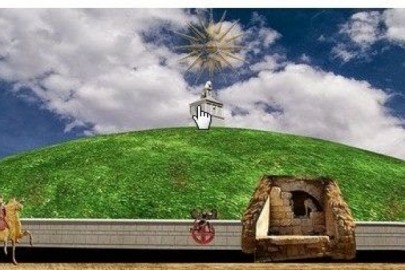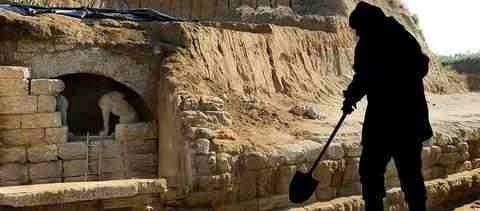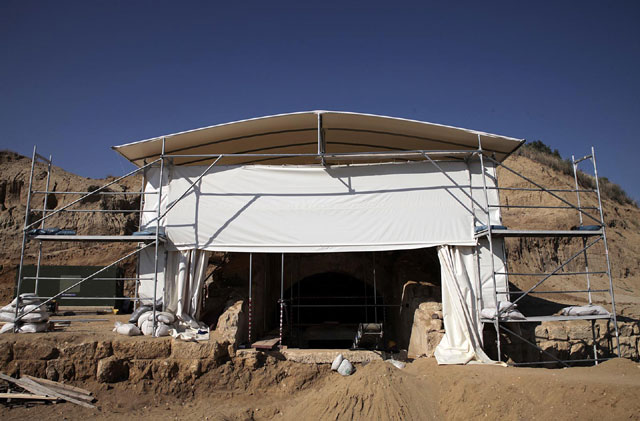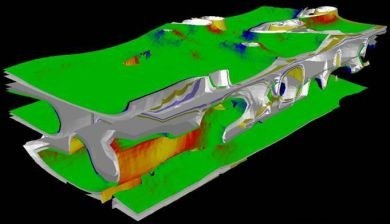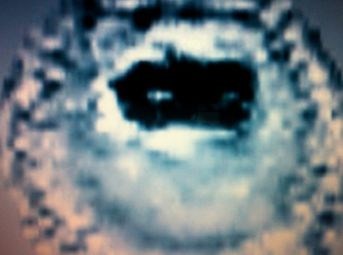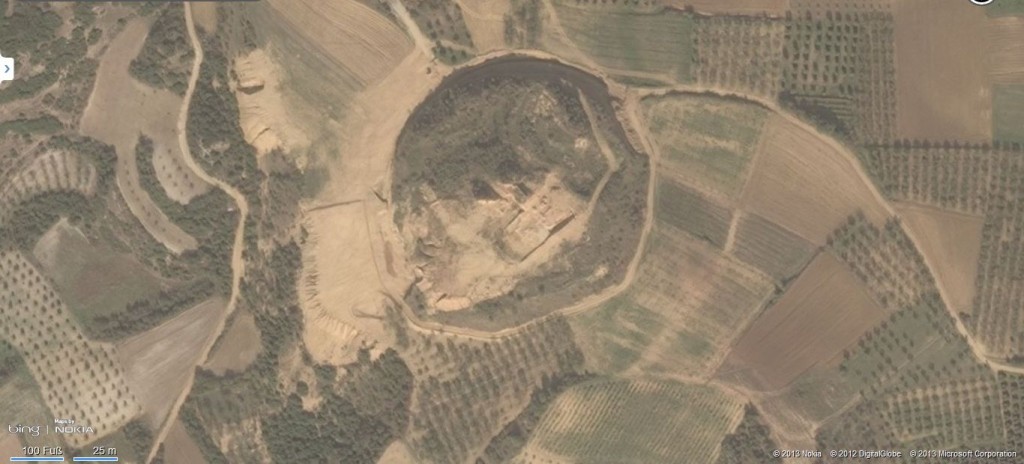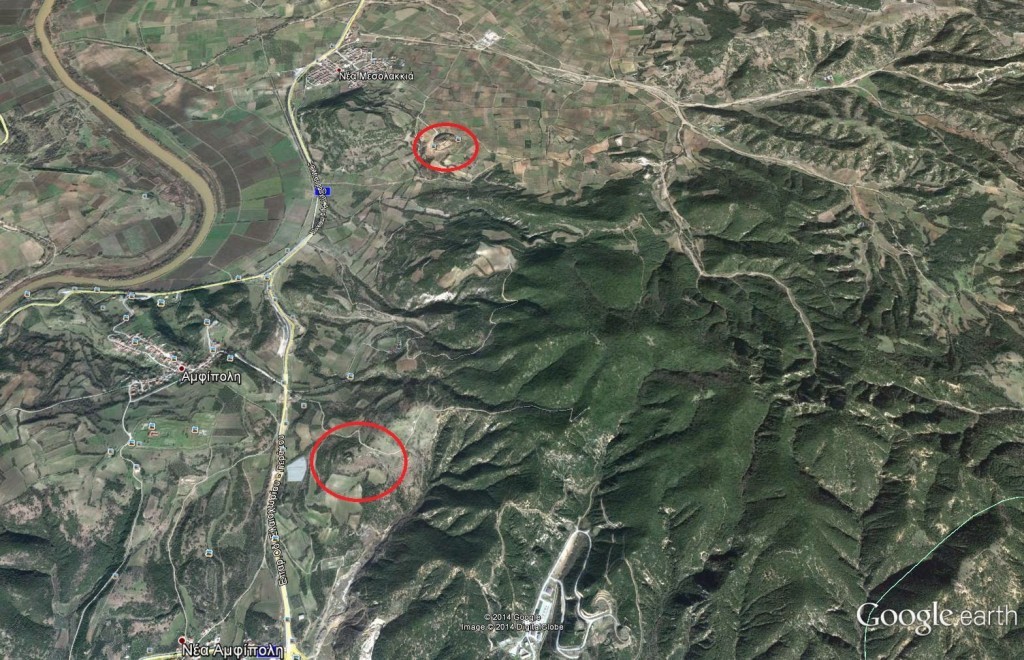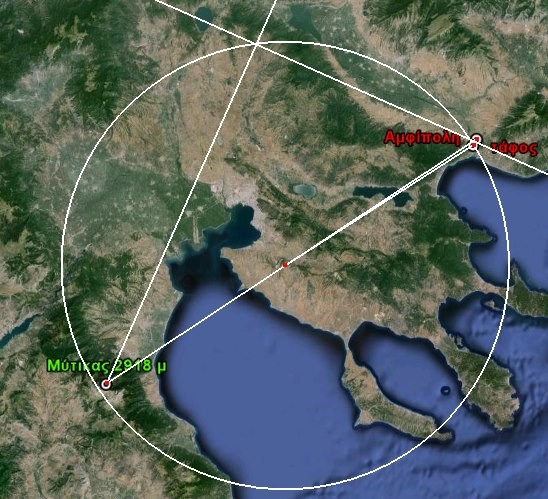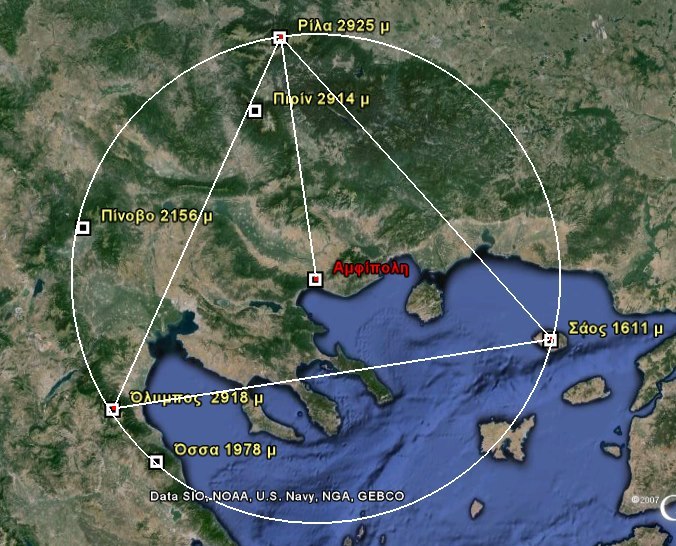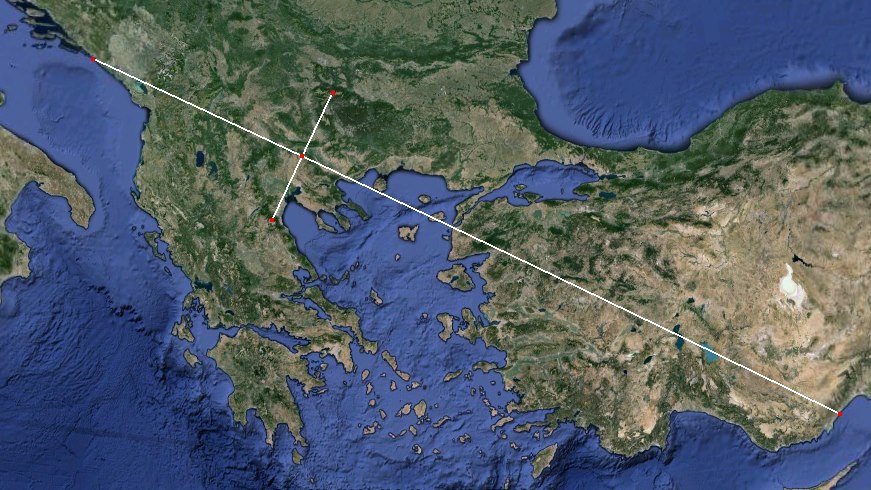Culture Minister Kostas Tasoulas said that we will soon have more news about the excavation of the ancient tomb at Amphipolis that has gripped worldwide attention. The minister said that there is no great mystery concerning the ancient site where work is progressing slowly in order to protect the area. Daily bulletins and photos being released by the Ministry of Culture and Sports to prevent any outlandish speculation. Despite the Ministry’s updates, there has been a barrage of speculation and interest concerning the burial mound.
Egyptian influence
The ancient tomb at Amphipolis showed that the sealing wall was created with diaphragmatic walls and filled with loose sand up to the height of the dome. Archaeologists speaking with Greece’s daily, Eleftheros Typos, expressed their astonishment regarding this practice that has only been found at Egyptian tombs so far.
The people who created the tomb filled the chambers with sand immediately after the burial to protect it from grave robbers. “We have excavated hundreds of tombs in Macedonia and haven’t noted a similar practice elsewhere,” say archaeologists. “There is no previously undisturbed tomb that has been covered with sand.” Sources from the Ministry of Culture and Religion state that this was a traditional Egyptian practice that was not noted in Greece.
The Egyptian elements of the tomb serve to further certify the idea that architect Dinocrates, a close friend of Alexander the Great and companion during the warrior king’s campaign, was the designer of the tomb.
Another Egyptian element was the fact that sphinx guards kept vigil at the entrance, though archaeologists warn that this fact alone doesn’t testify to a link with Egypt.
CPR radar methodology
A number of sources refer to CPR methods that had been used to scan the tomb in July 2013 by a team led by Konstandinos Papatheodorou, lecturer of the Department of Geoinformatics and Surveying of Serres Technical College (TEI). A vacant space was found 12 meters beneath the peak of Kasta Hill where the burial mound is located. The team located a chamber lying at a depth of 8 meters. It lies 20 meters from the current center of the hill at the same level as the entrance of the burial mound.
It is estimated that the specific distance to the base had a wider diameter that couldn’t be read by the CPR georadar. The equipment used didn’t have the capacity to register metals such as silver or gold.
Amphipolis enthusiasts take to Google Earth
A number of self-proclaimed Amphipolis watchers have taken to google earth to seek various geometrical links between the site and other sites with a great deal of speculation as to whether there is a smaller tomb nearby.
Amphipolis enthusiasts have also taken to figuring out mathematical equations linking Amphipolis to other ancient sites and landmarks:
Ask me anything
Explore related questions
